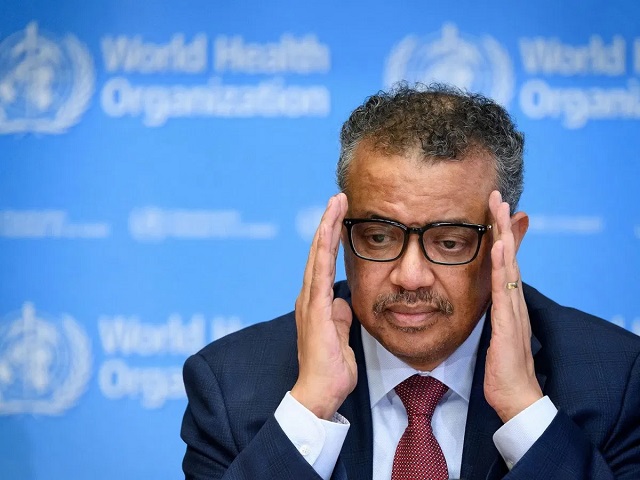
Washington, United States | XINHUA | The United States on Tuesday officially submitted its notification of withdrawal from the World Health Organization (WHO) to the United Nations secretary-general, setting in motion the country’s exit from the global body in the midst of the COVID-19 pandemic.
U.S. President Donald Trump and his administration repeatedly assailed the WHO for months and threatened to cut ties with the organization. Trump also announced in mid-April that his administration would halt U.S. funding to the WHO.
Experts and Democrats criticized that the Trump administration was trying to shift the blame of its mishandling of COVID-19 response and would be counterproductive to addressing the public health crisis.
“To call Trump’s response to COVID chaotic & incoherent doesn’t do it justice. This won’t protect American lives or interests – it leaves Americans sick & America alone,” Democratic Senator Bob Menendez, ranking member of the Senate Committee on Foreign Relations, tweeted on Tuesday.
The United States will leave the WHO on July 6, 2021, and currently it owes the organization more than 200 million U.S. dollars in assessed contributions, according to the WHO website.
The country has reported more than 2.99 million COVID-19 cases with over 131,000 deaths, according to the latest Johns Hopkins University tally. Both figures are far higher than those in any other country or region.
After lockdown measures were eased in some states, the United States is struggling to respond to the devastation inflicted by COVID-19 even harder.
“We had been in a situation (where) we were averaging about 20,000 new cases a day,” Anthony Fauci, director of the U.S. National Institute of Allergy and Infectious Diseases, said in a livestream with Francis Collins, director of the National Institutes of Health on Monday.
A series of circumstances associated with various states and cities trying to open up in a bid to get back to some form of normality, has led to a situation where the country now has “record-breaking cases,” Fauci said.
California, Hawaii, Missouri, Montana, Oklahoma and Texas on Tuesday shattered their previous daily record highs for new cases, according to the latest tally.
Texas reported over 10,000 new confirmed cases, the biggest one-day increase in the state, said the Texas Health and Human Services.
During a daily news conference on Monday, Houston Mayor Sylvester Turner said hospitals are seeing a continuous increase of coronavirus-related hospitalizations.
He also warned that Houston hospitals could be overwhelmed if the rapid spread of the virus is not under control.
“If we don’t get our hands around this virus quickly, in about two weeks, our hospital system could be in serious, serious trouble,” Turner said.
Florida has seen its caseload soar past 10,000 per day and 200,000 overall. More than four dozen hospitals in Florida reported that their intensive care units (ICUs) have reached full capacity on Tuesday as COVID-19 cases surge in the state and throughout the country, said the state health department.
The ICUs were full at 54 hospitals across 25 of Florida’s 67 counties, according to data published on Tuesday morning by the state’s Agency for Health Care Administration. More than 300 hospitals were included in the report, but not all had adult ICUs.
Local authorities reversed course on a reopening plan, issuing an emergency order to shut down gyms, party venues and restaurants, with exceptions for takeout and delivery, which will go into effect on Wednesday.
A widely cited mortality model from the University of Washington’s Institute for Health Metrics and Evaluation (IHME) projected on Tuesday that U.S. deaths would reach 208,000 by Nov. 1, with the outbreak expected to gain new momentum heading into the fall.
“The U.S. didn’t experience a true end of the first wave of the pandemic,” IHME Director Dr. Christopher Murray said in a statement. “This will not spare us from a second surge in the fall, which will hit particularly hard in states currently seeing high levels of infections.”
*****
XINHUA
 The Independent Uganda: You get the Truth we Pay the Price
The Independent Uganda: You get the Truth we Pay the Price


